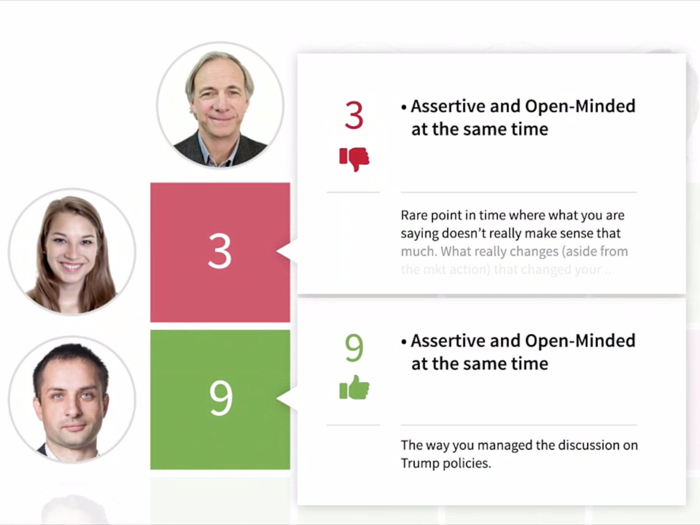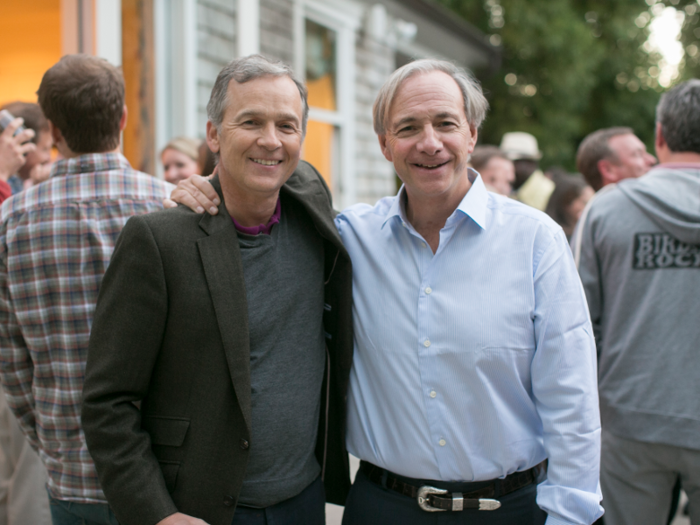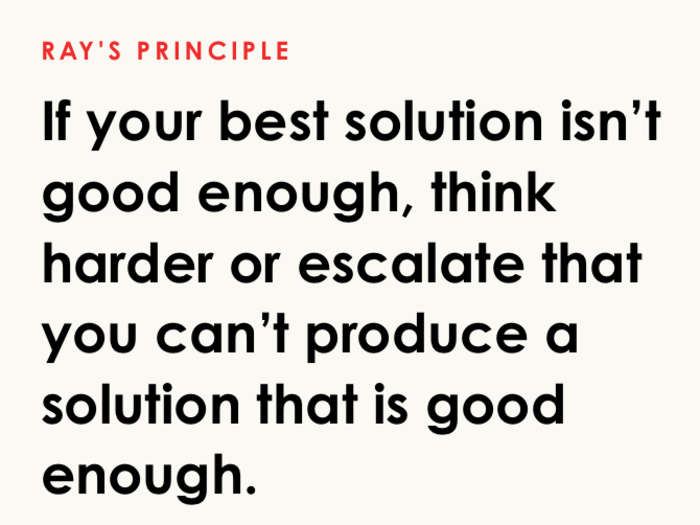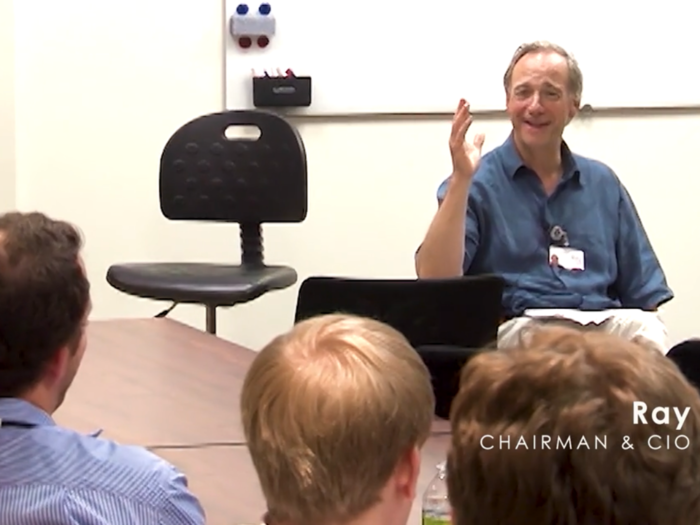- Home
- slideshows
- miscellaneous
- Ray Dalio started Bridgewater in his apartment and built it into the world's largest hedge fund. Here are 5 major lessons he's learned over the past 44 years.
Ray Dalio started Bridgewater in his apartment and built it into the world's largest hedge fund. Here are 5 major lessons he's learned over the past 44 years.
Hitting rock bottom in 1982 resulted in a change from focusing on what he knows to focusing on what he doesn't know.

An employee's mistake taught Dalio to track what does and doesn't work.

One time in the early '90s, Dalio's head of trading at the time, Ross Waller, forgot to put in a trade — and the mistake cost what Dalio remembers as "several hundred thousand dollars."
He didn't fire Waller (Waller didn't leave until 2004 and has had a long and successful career). Instead, Dalio used the occasion to implement a new approach at Bridgewater.
"I put into place an error log, which we now call an 'issue log,' in which everybody in the company has to write down whenever anything goes wrong so that they bring it to the surface and we learn from it," he said.
It was the first time Dalio created a management tool, and that one would grow into many. Today at Bridgewater, employees have "baseball cards" that track their skills and performance and make it visible to all, and they use the "Dots" iPad app as a real-time forum for commentary during a meeting.
The experience with Waller proved to Dalio that not only should people be given second chances after making mistakes, but that these mistakes can be capitalized on for determining new ways to reinforce desired performance.
A tough conversation with his leadership team taught him about how "radical transparency" can improve relationships when used correctly.

By 1993, Dalio was convinced that unfiltered truth would keep Bridgewater running smoothly. Except not everyone was in full agreement.
One day that winter, three senior executives, including co-CIO Bob Prince, asked Dalio for a meeting and sent him a memo ahead of it. The letter said that while Dalio was great at his job and cared about his team, he was, essentially, acting like a jerk. They said his words and behavior made employees feel "incompetent, unnecessary, humiliated, overwhelmed, belittled, oppressed, or otherwise bad."
Dalio was upset, and he searched for a compromise between the poles he had set for himself: either we're honest with each other or happy. He decided that "radical transparency," as he called it, was crucial for Bridgewater, but that boundaries and expectations had to be set.
"When you're not getting along with somebody or you're having a disagreement, stop, put that aside for a moment, go to a higher level, and then say, 'How should we be with each other? What are our ground rules for operating, and why?'" Dalio told us. "Then go back into your disagreement, and follow those protocols about how you should be with each other."
Bridgewater's rapid growth encouraged Dalio to start writing down his "principles."

Early in his career, Dalio learned that he could program certain investment behaviors, according to what was happening in the markets, into software that made a computer an invaluable tool for trading. This led to an accumulation of investment principles that gave Bridgewater an edge.
As he developed as a leader, Dalio became convinced that the same approach could be used with people. In 2006, Bridgewater had moved past its boutique stage and was on a path of rapid growth. To maintain his firm's culture, Dalio decided to collect a list of its tenets.
In the podcast episode, Dalio said it wasn't as if he suddenly appeared before his company with a book of rules they had to follow. Instead, he said, he had codified what had already existed.
He noted that it's no secret Bridgewater has an intense culture and isn't for everyone, but he believes this practice of logging personal or corporate principles is valuable for and adaptable to any situation.
"One of the great things I'd like to pass along is the power of having people write down their decision rules," Dalio said, because creating processes out of best practices results in better risk management and better communication.
Difficulties with his succession plan taught him about focus and delegation.

Dalio and his team were confident the financial crisis was on its way and planned accordingly. Bridgewater, then, performed relatively well when it did hit, and this brought an influx of attention and new clients. In 2010, Bridgewater had its best year ever.
During this period, Dalio decided he needed to build a succession plan, and was ready to have it last anywhere from a couple years to a decade. He stepped back as CEO in 2011, splitting office leadership between David McCormick and Greg Jensen. In his book, Dalio wrote that he considers Jensen family, and so when it turned out that Jensen was unable to balance both of his roles as co-CEO and co-CIO (a problem Dalio had run into himself in 2008), Dalio considered the ensuing shakeup in 2016 to be his biggest regret at Bridgewater.
He had appointed another CEO, Jon Rubinstein, in 2016, but the role lasted only 10 months. After a year back in the CEO seat, Dalio finally felt he got the succession plan right in 2017 and stepped back.
In the podcast interview, Dalio said the experience taught him several lessons.
"One can say, I think this is going to happen but I shouldn't bet on it, because if you haven't done something three times before successfully, don't assume you know how to do it," he said.
He sought advice from the management expert Jim Collins and learned that he not only needed a governance board for this transition, but that a leader's perspective and talents are not suddenly transferable to a role they have never had.
"I learned how people see things differently," Dalio said. "I learned not to assume that somebody can do something until they're doing it already."
Popular Right Now
Popular Keywords
Advertisement